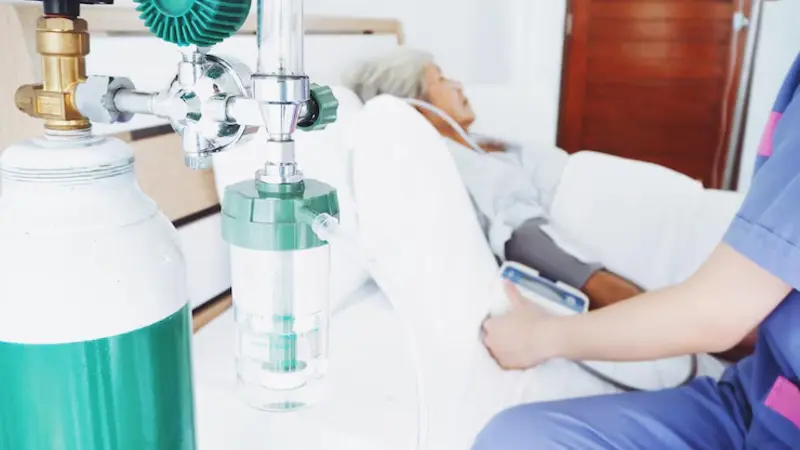Introduction
An oxygen concentrator is a device that is filled with medical grade oxygen and is used for the ease of patients that’s have any sort of breathing difficulty. It provides oxygen to the patients and helps in breathing.
For those who are using oxygen concentrator regularly and are dependent on oxygen concentrator should must have to track the run time for one cylinder. This effort will prevent them from any sort of difficult situation.
As of this there is a common concern “Can it run 24/7?”. In this article we are going to guide you about the run time of an oxygen concentrator. What are the precautionary measures you must have to take to make your daily usage of oxygen concentrator easy.
Can an Oxygen Concentrator Run Continuously?
General answer to this question is yes, an oxygen concentrator can work continuously as it is designed for this purpose. Rather than this there are some limitations like, the quantity of oxygen in the cylinder, the size of the cylinder which usually states that how much medical grade oxygen can be stored in it.
There are two types of modes in an oxygen concentrator or you can say that there are two types of oxygen concentrator. One is continuous flow while the other is pulse mode. Both have their key importance and also their usage is also dependent on there type. Pulse mode is usually used in those that are well consciously and need less amount of oxygen. In this type less oxygen is dispatched from the oxygen concentrator usually a measured amount typically in a form of pulse wile would lead to less waste of oxygen. On the other hand,
there is continuous mode.It is basically for those who need more amount of oxygen, are less conscious and have more severe condition.
Oxygen concentrator is used for easing in breathing. It is used by the individuals that are suffering from any sort of breathing issue like COVID 19, COPD etc.
Types of Oxygen Concentrators and Their Runtime Capabilities
Stationary/Home Concentrators
.Typically built for 24/7 operation
. Durable compressors and cooling systems
. Power dependency (electric or battery backup)
Portable Oxygen Concentrators (POCs)
. Designed for intermittent or pulse flow
. Battery limitations (4–12 hours on average)
. Need for charging and spare batteries
-
Factors That Affect Continuous Operation
. Device Quality & Brand
. Flow Rate Settings
. Ambient Conditions
. Power Supply Stability
. Maintenance Routine
Manufacturer Guidelines and Real-World Performance
Go for top brands that offers continuous operations as well as long term reliability. Usually, the locally manufactured products will not be as reliable as the global brands though the locally manufactured products can be cost effective.
Gather knowledge of the products that are available efficiently and choose wisely from them. Select the product that is best for you and will fulfil your need and demands.
Don’t buy second have devices for your healthcare because there is possibility that they are not well maintained or maybe they will be of low quality. This will lead to difficult scenarios for you. Buy a new device and choose wisely from the wide range of devices that are available in the market.
Risks of Continuous Operation Without Breaks
. Overheating or mechanical wear
. Reduced oxygen purity due to dirty filters
. Increased energy consumption
. Shortened device lifespan
Best Practices for Safe Continuous Use
. Ensure proper ventilation around the machine
. Follow maintenance schedule (filters, alarms, service)
. Use a voltage stabilizer or UPS to avoid power fluctuations
. Keep a backup source (cylinder or second concentrator) in case of failure
Conclusion
. Most oxygen concentrators can run 24/7 if used properly
. Focus on choosing quality equipment, following care guidelines, and having a backup
. It is most important to consult a healthcare provider for personalized usage advice Contact us for more details visit my site.
